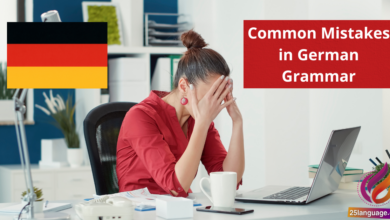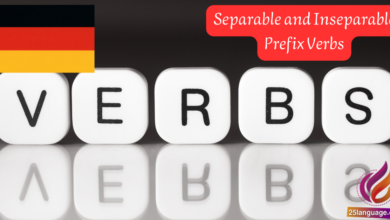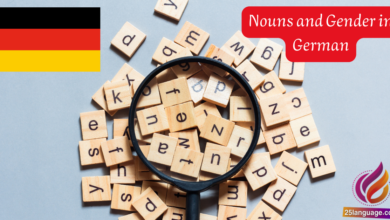How to Use “es gibt” in German

Imagine wandering through a bustling German market, where every corner reveals somthing exciting to explore.In this lesson, we’ll unlock the power of “es gibt” in German, a common phrase that translates to “there is” or “there are.” This essential expression will help you describe what exists around you, making your conversations more vibrant and engaging. Get ready to enhance your German skills and discover how to share your experiences with confidence!

Mastering “es gibt” in German for Everyday Conversations
In German, “es gibt” translates to “there is” or “there are” in English and is a crucial phrase for expressing the existence of something.This phrase is commonly used in everyday conversations to talk about the presence of people, objects, or general situations. The structure of “es gibt” is fairly straightforward as it is indeed followed by a noun and specifies quantity. As an example:
- Es gibt einen Hund im Park. - There is a dog in the park.
- Es gibt viele Bücher in der Bibliothek. – There are many books in the library.
- Es gibt keine Zeit für das Mittagessen. - There is no time for lunch.
When using “es gibt,” it’s critically important to note that it is indeed typically used with the accusative case. Therefore,definite and indefinite articles transform as thay would in the accusative case. For example, “ein” becomes “einen” when used for masculine nouns. Additionally, you can also use it with plural nouns.the following table summarizes how “es gibt” is used with different types of nouns:
| German Example | English Translation | Notes |
|---|---|---|
| Es gibt einen Tisch im Raum. | There is a table in the room. | Masculine noun (Tisch) uses “einen.” |
| es gibt eine Flasche Wasser. | There is a bottle of water. | Feminine noun (Flasche) uses “eine.” |
| Es gibt mehrere Möglichkeiten. | There are several options. | Plural noun (Möglichkeiten) uses “mehrere.” |

Exploring the Role of “es gibt” in Describing Existence
The phrase “es gibt” is a fundamental structure in German that translates to “there is” or “there are” in English. it is used to indicate the existence or availability of something, making it a crucial part of everyday language. When using “es gibt,” the structure typically follows this pattern: es gibt + [plural noun] + [other elements]. This construction can describe both countable and uncountable nouns. For example:
- es gibt einen Hund im Garten. (There is a dog in the garden.)
- Es gibt viele Bücher in der Bibliothek. (there are many books in the library.)
- Es gibt Wasser im Kühlschrank. (There is water in the fridge.)
One key aspect to note is that the noun following “es gibt” should generally be in its plural form when indicating multiple items, and the phrase does not change to agree in number or gender. This means that nonetheless of weather the subject is singular or plural, the structure remains unchanged. Moreover, when negating the existence of something, you would use es gibt nicht or es gibt keine for countable nouns. As an example:
- Es gibt keine Äpfel mehr im Obstkorb. (There are no more apples in the fruit basket.)
- Es gibt nicht genug Zeit für die Aufgaben. (There is not enough time for the tasks.)
| german Example | English Translation | Notes |
|---|---|---|
| Es gibt einen Tisch im Esszimmer. | There is a table in the dining room. | Singular noun in accusative. |
| Es gibt viele Stühle hier. | There are many chairs here. | Plural noun in nominative. |
| Es gibt kein Brot mehr. | There is no bread left. | Using ’nicht’ for uncountable noun. |

Practical Tips and Examples for Using “es gibt” Effectively
The phrase “es gibt” translates to “there is” or “there are” in English and is used to indicate the presence or existence of something. It’s a very useful construction in German and is often employed to describe things in both singular and plural forms. Note that “es gibt” is always followed by an accusative noun. Here are some examples:
- Es gibt einen Hund. (There is a dog.)
- Es gibt viele Bücher. (There are many books.)
- Es gibt kein Wasser. (there is no water.)
To make your sentences more informative, you can add other details such as locations or additional explanations. Using “es gibt” in different contexts can enhance your learning and practical usage:
- Es gibt einen schönen Park in der Stadt. (There is a lovely park in the city.)
- Es gibt zahlreiche Möglichkeiten,Deutsch zu lernen. (There are numerous ways to learn German.)
- Es gibt kein Problem. (There is no problem.)
| German Example | english translation |
|---|---|
| Es gibt einen Tisch. | there is a table. |
| Es gibt viele Möglichkeiten. | There are many possibilities. |
| Es gibt ein neues Restaurant. | There is a new restaurant. |
| Es gibt keine Sorgen. | There are no worries. |

Navigating Common Scenarios with “es gibt” in German Language
To express the existence of something in german, the phrase “es gibt” is commonly used. this phrase translates to “there is” or “there are” in English and is essential for describing various scenarios. The structure is quiet straightforward: es gibt + noun phrase (also defined by articles). This construction helps in conveying what is present or available in a specific context. For instance:
- Es gibt ein Buch auf dem Tisch. – There is a book on the table.
- Es gibt viele Möglichkeiten, Deutsch zu lernen. – There are many ways to learn German.
When using “es gibt”, it is important to remember that the noun following it typically comes in the accusative case, as “es gibt” implies availability. Additionally,negative sentences can be formed by simply adding nicht after the noun. Examples include:
- Es gibt keine Äpfel im Kühlschrank. – There are no apples in the refrigerator.
- Es gibt nichts zu essen. – There is nothing to eat.
| German Example | Rule | english Translation |
|---|---|---|
| Es gibt einen Film im Kino. | Use of “es gibt” + accusative noun. | There is a movie in the cinema. |
| Es gibt viele Blumen im Garten. | Plural noun after “es gibt”. | there are many flowers in the garden. |
| Es gibt keine Schulen hier. | Negative form with “nicht”. | There are no schools here. |
Future Outlook
we’ve explored the essential phrase “es gibt” in German, a fundamental construct that allows you to express existence and availability in a variety of contexts. We started by understanding its meaning, translating to “there is” or “there are,” and learned how to structure sentences effectively around it. Through various examples and practice exercises, we saw how “es gibt” can help you discuss everything from local attractions to personal preferences.
Remember, mastering “es gibt” opens the door to richer conversations and interactions in your everyday life. Whether you’re talking about the flavorful bakery around the corner, the exciting events happening in your city, or simply sharing your thoughts, this phrase is a versatile tool in your language toolbox.
Now, I encourage you to put your new knowledge into practice! Whether through conversations with friends, in your travel experiences, or even in writing, try to incorporate “es gibt” into your German-speaking or writing endeavors. The more you use it, the more natural it will become. Keep practicing, stay curious, and enjoy the journey of learning German. You’re doing grate, and every step you take brings you closer to fluency!





























